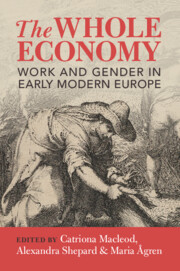4 - Rural Manufactures
Published online by Cambridge University Press: 09 June 2023
Summary
Preindustrial Europe was characterized by an expansion of rural, or ‘cottage’ manufacturing for markets, both domestic and foreign. Much was textile processing and manufacture, including silk and flax production, spinning and weaving of various types of thread, knitting, lace-making and painting on cotton (the last to compete with ‘Indian cottons’). But it also extended to metallurgy, tile-making, pottery-works, wicker-working and various kinds of food-preservation. When, in the late 1960s, historians began studying this ‘proto-industry’, the question of surplus labour became key to understanding what was then seen as an initial stage in the industrialization process. Local studies would later show that women and children supplied a large portion of this labour. This chapter reviews the empirical evidence collected in recent decades about the widespread employment of women and children in rural manufactures in early modern Europe. Examining recent scholarship on occupational structure, it confirms that women were indeed the main actors in structural change, forming a disproportionate share of the workforce in some of the most innovative sectors. The chapter also emphasizes the importance of labour demand, rather than labour supply, in accounting for the rising employment of women in manufacturing.
Keywords
- Type
- Chapter
- Information
- The Whole EconomyWork and Gender in Early Modern Europe, pp. 115 - 135Publisher: Cambridge University PressPrint publication year: 2023



